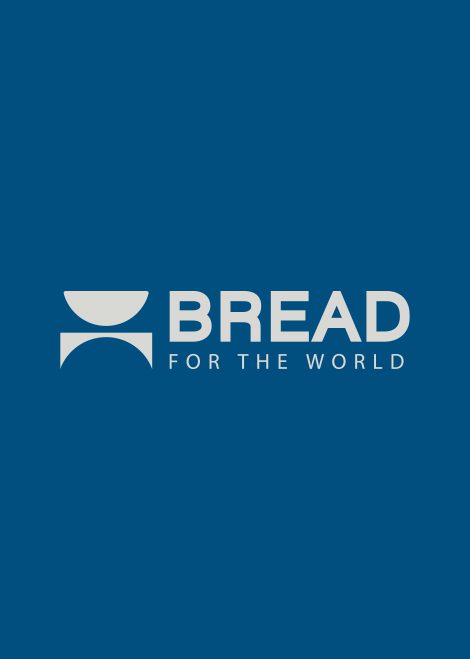Contents:
- A Stronger, Hunger-Free Democracy
- What’s Next for USDA?
- The Way Forward: A racially equitable response to COVID-19
- New Resource: Confronting Climate Change to End Hunger
- Transforming Assistance to End Hunger in Fragile Contexts
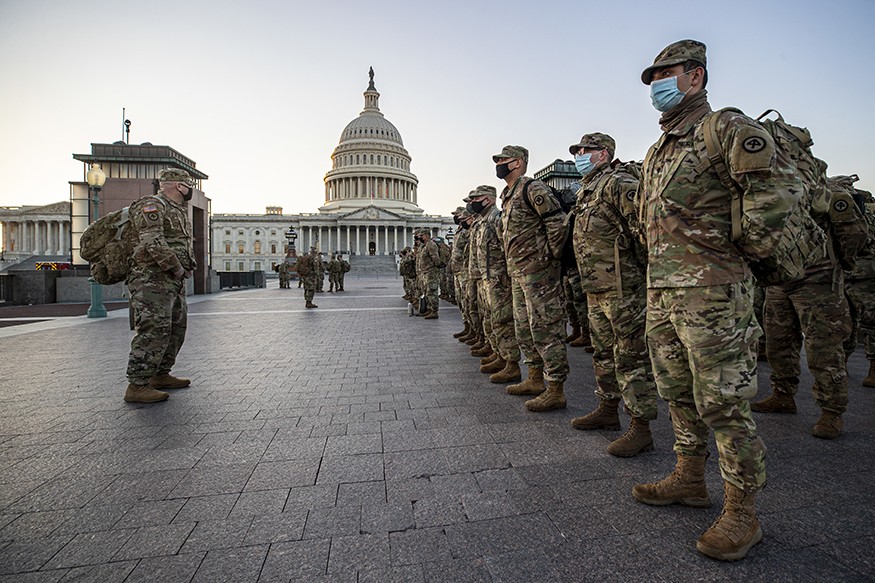
A Stronger, Hunger-Free Democracy
By Asma Lateef
As 2021 begins, Bread for the World Institute, along with many others in the United States, is trying to discern a way forward in the aftermath of the January 6 attempted coup. I never expected to write “attempted coup” about our own country. But what happened at the Capitol is how coups often unfold.
The coup attempt targeted the very last step of the process before the inauguration of a new president—congressional approval of the results of the presidential election as certified by the Electoral College and each state. It is usually a formality since the ballots have already been counted, checked, and rechecked.
Since Bread for the World’s beginning in 1974, the success of our grassroots anti-hunger advocacy has always relied on democratic principles. These are encapsulated in familiar phrases such as “the consent of the governed” and “the rule of law.” Transparency in government, more simply known as “telling the truth,” is essential. Finally, democracy does not sanction violence. In fact, as one commentator put it, “Politics was invented to enable people to avoid settling their disputes through violence.”
The work of Bread advocates depends on having open access to their elected representatives through letters, phone calls, and visits. Bread members use personal experience, faith perspectives, proposed solutions based on evidence of what works in real life, and other strategies to persuade and sometimes urge their representatives to take actions to reduce hunger and malnutrition, both in the United States and around the world.
A recent Bread blog post, “Transforming Assistance to End Hunger in Fragile Contexts,” is the first in a series of updated pieces on the connections between fragility and global hunger. Our 2017 Hunger Report, Fragile Environments, Resilient Communities, offers an in-depth look at fragility—what it is and how it leads to hunger. In this report, we were clear that the United States is not a fragile country. This is still the case. The intruders were escorted out of the Capitol, and Congress then completed its task of approving the result of the presidential election. But the attempt to use violence to overturn the election shows that “fragile” and “non-fragile” are not separated by a firm line. Rather, the difference is a slippery slope.
It is not a coincidence that COVID-19 was spreading unchecked in the United States during a time when the vulnerability of U.S. democratic institutions became increasingly apparent. Unemployment, underemployment, hunger, food and housing insecurity, increasing pressures on parents (particularly single mothers), increases in violence against women and children during lockdowns, and the impacts of isolation all contributed to rising social tensions.
White supremacist and other far-right extremist groups had been gathering momentum for some time even before the violence in Charlottesville in 2017. Dangerous incidents seemed to become increasingly common as the pandemic accelerated—including an invasion of the Michigan statehouse and a plot to kidnap and perhaps kill the state’s democratically-elected governor. At the same time, democracy was also threatened by a succession of brutal killings of unarmed Black citizens by police.
Where should our focus as anti-hunger advocates be in 2021?
The U.S. context seems to be one of jarring contrasts. A new Congress begins work, but the Capitol will never be the same. The COVID-19 pandemic enters its second year unabated and a global malnutrition pandemic follows it, but vaccines and countries with successful prevention efforts offer hope. Efforts to “build back better” from the pandemic also offer an opportunity to put partisanship aside and to work together to make changes that will put our country on track to end hunger, get people back to work, and reduce inequality. 2021 is also a year of global action on the goal to end hunger, with several upcoming summits: the Food Systems Summit, the Nutrition for Growth Summit, and the Climate Conference.
Asma Lateef is the director of Bread for the World Institute.

Asma Lateef is director of Bread for the World Institute.
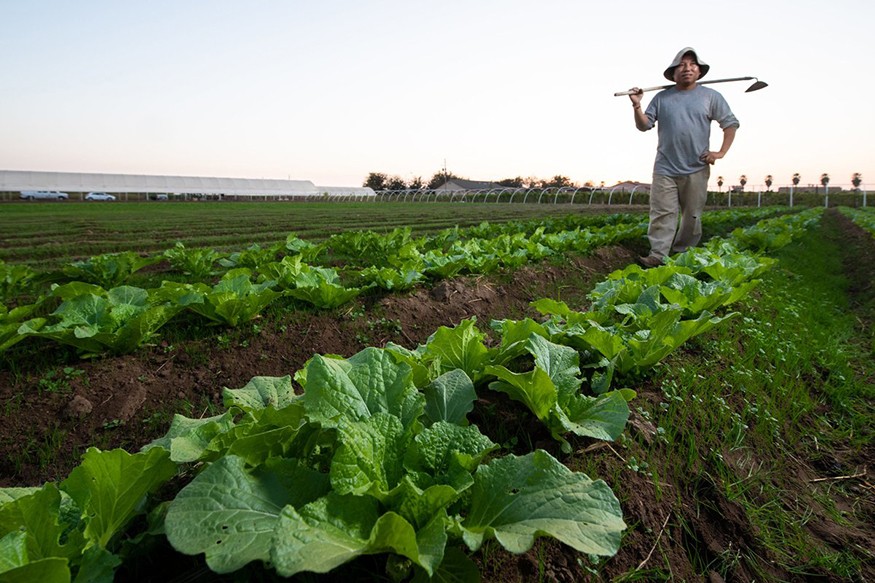
What’s Next for USDA?
By Todd Post
When an incoming president selects Cabinet members, Bread for the World always pays attention to who is nominated to lead the U.S. Department of Agriculture (USDA). The choice is an early indication of the new administration’s level of commitment and determination to reducing hunger and malnutrition.
In December, then President-elect Biden selected Tom Vilsack to lead USDA. Vilsack is well-known in Washington, DC, because he also served as Secretary of Agriculture for the eight years of the Obama administration. Vilsack’s first stint as Secretary of Agriculture began in 2009 during the Great Recession, and he returns in 2021 during the COVID-19 Recession.
Strong anti-hunger leadership at USDA is critically important this year, even more than most years, because of the COVID-19 pandemic. Let’s not mince words: COVID-19 is a hunger catastrophe—for people who were already hungry as of March 2020, for people who were at risk of hunger then, and for many people who have never before been unable to put food on the table. U.S. hunger rates are startling: for example, 25 percent of all Black children are facing hunger.
The largest share of USDA’s budget goes to nutrition programs. USDA has jurisdiction over all the U.S. federal nutrition programs— the Supplemental Nutrition Assistance Program (SNAP), WIC, school meals programs, and about a dozen smaller programs—plus the McGovern-Dole international food aid program. The U.S. Agency for International Development (USAID) manages the rest of the U.S. international food assistance programs.
USDA is also in charge of rural development programs, which assist communities across the country. In the United States, nine out of 10 “persistent poverty counties”—meaning that year after year, decade after decade, 20 percent or more of the county’s population lives with poverty—are rural. Disinvestment in areas with entrenched poverty carries tragic consequences. For example, the many closures of rural hospitals over the past several decades led to very high death rates when COVID-19 ripped through rural communities.
USDA, as its name indicates, also manages all U.S. agriculture policies. Not only do farms produce the food that is essential to human survival, but agricultural practices are increasingly pivotal to U.S. efforts to reduce the greenhouse gas emissions that cause climate change. Climate change is one of the main causes of global hunger. Farm policies, more specifically the crops that farmers are rewarded for growing, also have a significant impact on health. The crops that currently receive government commodity payments are not fruits, vegetables, and/or other foods vital to good nutrition, which means that commodity policies are directly linked to the country’s high rates of chronic health conditions such as diabetes and obesity. Among the many consequences of these disorders are greater risks of complications and death from COVID-19.
Here are some opportunities for the new administration and USDA to make progress on hunger and nutrition:
- The most recent Child Nutrition Reauthorization (CNR) was in 2010. A new CNR is long overdue since reauthorization generally takes place every five years. Although small changes for the better—or unfortunately for the worse—can be made at any time, the CNR is the opportunity to make transformational improvements. The significant improvements made in the most recent CNR were encapsulated in the Healthy, Hunger-Free Kids Act of 2010. Two of the most notable were strengthening nutrition standards and establishing the Community Eligibility Provision. Bread credited the Supplemental Nutrition Assistance Program leadership for helping to secure these changes. USDA can do better still in the next CNR.
- Another key piece of legislation that can improve food security, also under the jurisdiction of USDA, is the farm bill. The farm bill includes SNAP’s policies and programs. SNAP is an effective and vital safety net for families who cannot afford to buy enough food, but far too many of its participants still go hungry for part of each month because the monthly benefit amounts are too low. Most households will have used nearly all their benefits by the beginning of the third week of the month.
- Other parts of the farm bill that affect food security are easy to overlook, but they are important to healthy food systems. Bread for the World is concerned with the functioning of this whole “farm to fork” chain, since each link in the chain is important to improving people’s nutrition. It is also increasingly clear that farm policy and food policy cannot be put into separate compartments or “siloed.”
- In 2021, the United Nations will convene the first-ever global food systems summit. As climate researchers have warned, there is no time to lose in reforming food systems to help meet essential climate goals. The reality is that all national food systems are linked together in an interdependent global food system. The food systems summit will be a test of the Biden administration’s commitment to global partnerships. USDA must play a leadership role and demonstrate that the United States expects as much of itself as of its global partners.
- Another important opportunity for climate change action will come in November 2021, when countries meet in Glasgow, Scotland, for the United Nations Climate Change Conference. It is important for food systems issues to be included in the agenda on climate change to avoid jeopardizing progress made at the food systems summit.
As the Secretary of Agriculture, Mr. Vilsack is poised to lead USDA into this new era. We wish him the best, and we won’t hesitate to share our thoughts.
Todd Post is senior researcher, writer, and editor with Bread for the World Institute.
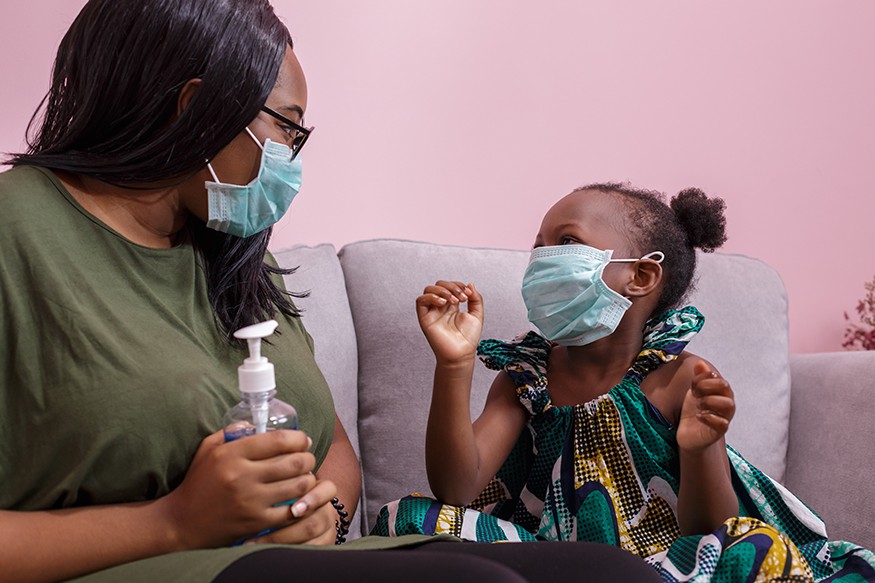
The Way Forward: A racially equitable response to COVID-19
By Marlysa D. Gamblin
In 2020, the COVID-19 pandemic further revealed the legacy of unresolved racism by disproportionately harming Black and Brown communities. The question that many policymakers—including President Joe Biden and the new Congress—must face is how to address these racial inequities. Answers can be found in a new report from Bread for the World Institute: “Racially Equitable Responses to COVID-19.”
The report compares the national death rates per 100,000 people in each racial group: 80 for Black people, 67 for Indigenous people, 59 for Pacific Islanders, and 46 for Latino/as—compared to 36 for white people. Whether the data comes from the county, state, or national level, the report shows that Black communities have the highest COVID-19 infection and death rates of any racial or ethnic group.
The report finds that race, particularly being Black, is the strongest determinant of death from COVID-19—a stronger indicator than risk factors such as older age or having diabetes. The first overarching recommendation of the report is to apply a racial equity lens in response to the crisis—and to go one step further by centering Blackness to undo the anti-Black racism that has led to these inequitable results.
The second overarching recommendation of this report is to center the experiences of Black women. The significant impact of living at the intersection of being Black and being female is often disregarded—but centering Black women is critical to achieve racially equitable responses to COVID because they have been hardest hit. Black women are 13 percent of the country’s female population, but almost 40 percent of women dying from COVID-19 are Black. The majority of Black workers are Black women—many of whom have had exposure to the virus from their frontline, lower paying jobs. Black women were also the hardest hit by unemployment.
Other recommendations in the report include immediate responses for food, income, and housing security, as well as long-term systemic responses to help close the racial wealth divide, eliminate areas of racialized concentrated poverty, reduce racial health inequities, and ultimately end racism more broadly.
As the Biden-Harris administration and a new congressional session begin, we recommend that elected officials and other policymakers take short-term actions to respond to racial inequities that are rooted in anti-Black racism and have widened during the pandemic, including:
- Use racial equity resources to design and implement legislation and policies. One of these is Bread for the World Institute’s Racial Equity Scorecard Tool, which outlines how to determine to what extent a given proposal or program applies a racial equity lens. To center Black women, the data used must be cross-sectional and disaggregated by race and gender rather than only by race or gender.
- Make SNAP responsive to the needs of all participants by applying a racial equity lens. Black, Indigenous, and Other People of Color (BIPOC) who are eligible for SNAP have fewer assets than whites at the same income level, a racial wealth divide that leads to many BIPOC households running out of food more quickly than white households. To remedy this, SNAP’s benefits formula should be changed to provide additional support to BIPOC households so as to account for gender inequity and be in proportion to how COVID-19 has impacted their households and communities.
- Work with states to extend eviction moratoriums for BIPOC households, especially BIPOC female-headed households, in areas of racialized concentrated poverty and high rates of COVID-19.
- Increase stimulus payments to BIPOC families in areas with the highest rates of COVID-19 infection, death, economic loss, and food insecurity, in proportion to these racial inequities and accounting for gender inequities. The spring 2020 stimulus payments were universal and did not account for the disproportionate impacts of COVID-19 on BIPOC communities. Centering Black women would result in their receiving the largest increase in stimulus payments, followed by other BIPOC women and men.
- Continue unemployment compensation in proportion to need for BIPOC households in areas of racialized concentrated poverty that have the highest rates of COVID-19 deaths, economic loss, and food insecurity. This approach would also include eligibility for BIPOC undocumented immigrants with no public charge penalty.
- Provide racially equitable support for BIPOC workers in essential jobs. Employer-based benefits (e.g., sick leave or child care) must be determined after applying a racial equity lens for BIPOC workers, in proportion to the impact of the crisis on their racial/ethnic communities. For example, because African American workers are more likely to contract the virus and/or to have family members who contract the virus, they would be given additional sick leave to care for themselves and family members.
- Convene a taskforce to outline a plan to end structural racism in all its forms, focusing particularly on anti-Black racism and centering Black women. The plan would coordinate anti-racist efforts in individual policies, across various topics, and within all agencies. The plan would also create Racial Equity Offices in the White House and in Congress, which would lead the development of policies that are racially equitable as well as efforts to repair harm from historical trauma.
Marlysa D. Gamblin is senior domestic policy advisor, racial and gender divides, with Bread for the World Institute.
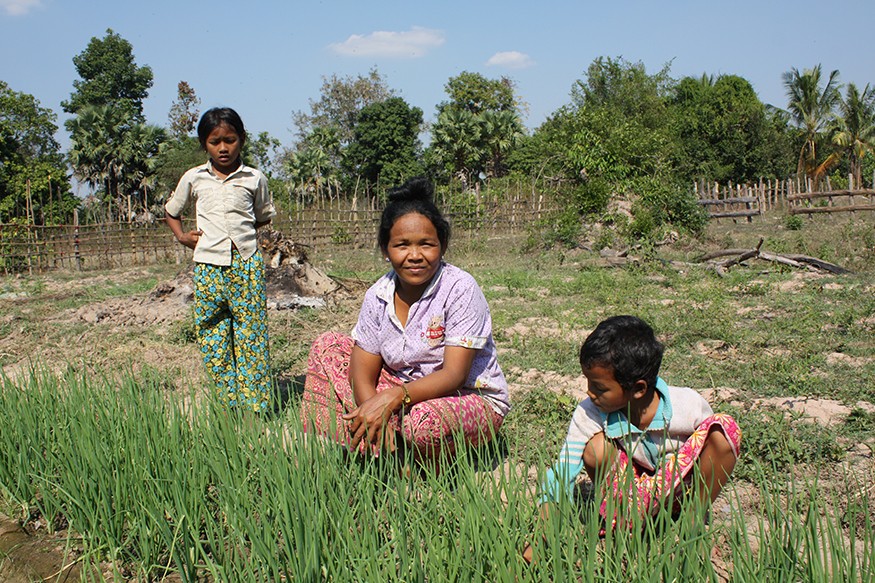
New Resource: Confronting Climate Change to End Hunger
By Karyn Bigelow
2021 is poised to be a big year for global conversations surrounding climate change. While incoming President Joe Biden was on the campaign trail, he committed to making climate change a priority for his administration. He promised to have the United States rejoin the Paris Climate Agreement early in his term, and he also said his “first 100 days” would include inviting global climate change leaders to meet in the United States.
Long-anticipated events and decisions that had to be put on hold in 2020 due to the COVID-19 pandemic have been rescheduled for 2021. Many hopes have been pinned to the COP26 meeting, particularly given the lackluster COP25 in 2019 (read our article on COP25). COP26 is now expected to be held later this year.
In addition to COP26, a number of other global discussions on climate change and sustainability are also planned for 2021. Specialized gatherings include:
- Biden Climate Leaders’ Summit
- Petersburg Climate Dialogue
- Climate Adaptation Summit
- U.K. Climate and Development meeting
- U.N. Framework Convention on Climate Change (UNFCCC) intersessionals
- U.N. Food Systems Summit
In addition, sessions during several broader meetings are also planned, including the G7 Summit, the U.N. General Assembly, and the G20 Summit.
It is essential to include nutrition and food systems as an integral part of all the climate gatherings, rather than to “silo” them as though they are separate concerns. In a cyclical relationship, climate change causes instability in the food system and the food system contributes to climate change. At the intersection of climate change and food systems are climate justice issues. These affect millions of people in the United States and globally who face hunger and poverty and also live on the frontlines of climate change impacts.
For more on how climate change affects hunger, read Bread for the World Institute’s latest resource, “Confronting Climate Change to End Hunger.” This background paper explores some of the complex impacts of climate change on the four pillars of food security: availability, accessibility, use (nutrition), and stability.
- Availability—the extreme weather associated with climate change is now more frequently disrupting planting and growing seasons. This can decrease crop yields or make farming completely untenable.
- Accessibility—decreased crop yields often mean unmet consumer demand for various foods, leading to higher food prices. Nutritious crops such as fruits and vegetables are more vulnerable to the impacts of climate change, making it even more difficult for low-income families to buy fresh produce and other nutrient-rich foods.
- Utilization/Use—Scientists have found that the extreme heat, higher levels of carbon dioxide, and other impacts of climate change can reduce the nutrient content of crops. This could result in an additional 100 million people or more experiencing deficiencies of vital micronutrients such as zinc and iron.
- Stability—Climate change makes millions of people around the world more vulnerable to hunger, forcing many to leave their homes in search of food. Dangerous impacts can range from droughts, to deep freezes, to the powerful storms known, depending on their locations, as hurricanes, cyclones, or typhoons.
The impact of climate change on hunger and food systems must be included as anti-hunger advocates work to build the political will to end hunger, whether in the United States or globally. The lives, livelihoods, and well-being of millions of people already depend on it, and their numbers are growing.
Karyn Bigelow is a research analyst with Bread for the World Institute.
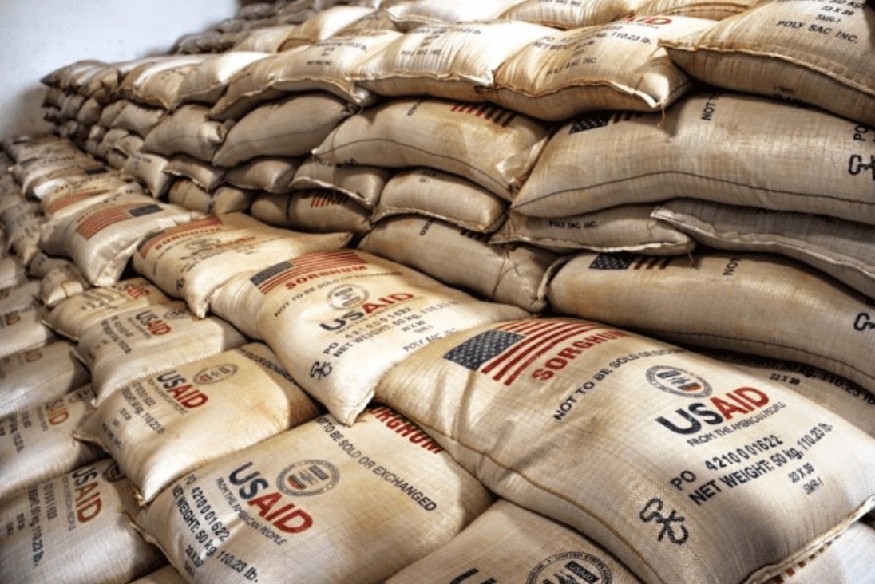
Transforming Assistance to End Hunger in Fragile Contexts
By Jordan Teague and Rahma Sohail
The COVID-19 pandemic is having a massive impact on almost every nation in the world. In many ways, the virus does not discriminate between rich and poor people or between rich and poor countries—yet it has also exposed and exacerbated fault lines already present in societies around the world.
This can be seen most acutely in fragile contexts, where the pandemic compounds ongoing crises to create dire situations. With this issue of Institute Insights, we begin a five-part series exploring the pandemic’s effects on global food security and nutrition in fragile contexts. We identify options to improve foreign assistance in such contexts as the world works to recover from the COVID-19 pandemic.
A nation is considered to be affected by fragility, conflict, and violence (FCV) if it confronts multiple crises that usually contribute to and aggravate one another. These crises may include hunger, poverty, civil unrest and conflict, poor governance, and—increasingly—extreme vulnerability to climate change. Armed conflict is a grave threat anywhere, because it creates environments that give other crises room and scope to grow uncontrollably. Conflict causes 80 percent of all humanitarian crises. Moreover, conflict cost countries that were affected about 4 percent of their GDP in 2020. Before the pandemic started, about 800 million people lived in countries affected by FCV, and according to the World Bank, by 2030, “two-thirds of the world’s extreme poor could live in FCV settings.” And as we know, hunger, food insecurity, and malnutrition are frequently the results of poverty.
To prepare for a reality where most people experiencing hunger will live in countries affected by FCV, the global community needs a better understanding of the various contexts and what needs to be done to enable people to escape hunger and malnutrition.
Despite the vast expanse of urgent needs around the world in 2020, development and humanitarian workers were unable to respond fully in many cases, both because of the risk of contracting COVID-19 and/or infecting others, and because of funding shortfalls. Major donors such as the United States and the United Kingdom reduced or redirected their donations. Coverage of nutrition and health services fell by 30 percent overall in 2020—a figure that masks a reduction of 75 percent or even 100 percent in places under lockdown. As of September 2020, only 7 percent of the $143 billion provided by international financial institutions had been allocated to low-income and fragile contexts. Experts believe that due to these combined factors, it is likely that 130,000 additional children under 5 have died.
The funding shortfall is also projected to carry long-term consequences in fragile contexts, especially when combined with the impacts of the COVID-19 pandemic. The U.N. Under-Secretary General for Political and Peacebuilding Affairs expects increased political risks, worsening human rights violations, rising hunger, and increased conflict and violence as countries face the pandemic.
The better news, however, is that other humanitarian actors have emerged in the vacuum created by the shortfall in funding from traditional donors. In the aftermath of the Port of Beirut explosion, and before international agencies could rebuild the port, the Lebanese people stepped up for each other. One story comes from an organic farmer who co-opted an abandoned gas station and accidentally started a food donation center. Other stories are coming out of Kenya, where, for example, residents of the country’s largest slum, Kibera, started an online crowd-funding platform to raise money for their food drive.
Many national governments are also doing what they can to support their populations during the crisis. The Lebanese government approved a $300 million aid package for 200,000 low-income families, as well as $2.9 million for 30,000 farmers and 6,600 laborers, and $12 million for 100,000 food rations and basic medical supplies. The government of Burkina Faso is providing $10 million to fruit and vegetable informal retailers, who are mainly women. It is also instituting price controls for staple foods, gasoline, and cooking gas to make sure their populations can afford these vital commodities. Many countries, however, face the impossible choice between funding basic services for their populations, or making debt service payments owed to international lenders.
Because the pandemic has reversed much of the progress of the past two decades, ending hunger in a sustainable way will require more than responding to crises as they happen, as much of a challenge as crisis response alone has proven. There must also be a focus on making aid more effective, addressing the root causes of crises to prevent future ones, and supporting stakeholders in fragile contexts. Stay tuned to Institute Insights for deeper dives into various fragile contexts and ways to move forward.
Jordan Teague is senior international policy advisor and Rahma Sohail was a 2020 Crook Fellow with Bread for the World Institute.
